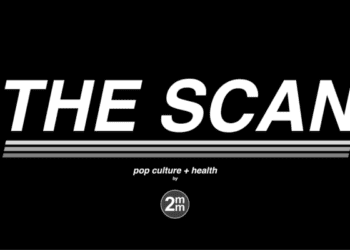Metagenomics: A new method of identifying bacterial outbreaks
Image: PD/CDC
1. Culture-independent identification of outbreak pathogens using metagenomics allows for recognition of unusual organisms for which laboratory methods do not exist.
2. The challenges associated with the use of metagenomics include: low sensitivity, longer processing times, and cost.
Study Rundown: The rapid confirmation and characterization of pathogens in common infections are lacking, and antibiotic resistance is increasing at a disconcerting rate. Therefore, the identification of scientific methods that expedite the recognition of causative organisms is critical. In this study using samples from the 2011 Germany Shiga-toxin E. coli (STEC) outbreak, the use of metagenomics is demonstrated to be able to recover genomic DNA from outbreak samples and subsequently identify outbreak strains and antibiotic resistant genes. Ideally, with this information, it would be possible to pinpoint the causative organism and tailor medical treatment based upon the results. The pivotal advantage of metagenomics is that it allows for the recognition of unusual organisms for which laboratory methods do not exist.
Unfortunately, a relatively low sensitivity of 67% represents a major disadvantage of metagenomics in a diagnostic setting. While metagenomics is able to reconstruct a genomic sequence from a pool of DNA, it does not identify a particular organism as a pathogen, even with the identification of virulent genes. Also, while metagenomics is also capable of detecting antibiotic resistance genes, it cannot recognize the original species to which it belongs. Given such limitations, further investigation into the complex regulation of genes and cellular activities associated with infectivity is necessary before this technology can be used in a clinically implementable manner in identifying causative organisms in disease.
Click to read the study, published today in JAMA
Click to read an accompanying editorial in JAMA
In-Depth [retrospective study]: In this study, 45 fecal samples were collected from patients with diarrhea during the 2011 outbreak of Shiga-toxigenic Escherichia coli (STEC) O104:H4 in Germany. In phase 1, the fecal samples were subjected to metagenomics (open-ended sequencing without enrichment or amplification). The results were assembled into environmental gene tags (DNA sequences that contain genes that can be used to identify the organisms from which they arise). The EGTs were selected for EGTs present in at least 20 samples and those with matches to healthy human samples were subtracted. The remaining EGTs were subjected to taxonomic analysis and 65% were allocated to the Enterobacteriales. In phase 2, the alignment phase, outbreak-specific samples were referenced against the STEC outbreak strain. Sequences from the Shiga-toxin gene were detected in 27 out of 40 (67%) STEC-positive samples. The outbreak strain genome was isolated from 10 samples at >10-fold coverage and from 26 samples at >1-fold coverage.
By Brittany Hasty and Rif Rahman
More from this author: Sublingual immunotherapy may be safe and effective for asthma and allergic rhinoconjunctivitis, Sildenafil does not improve outcomes in patients with heart failure, Increased incidence of advanced breast cancer found in young women
© 2013 2minutemedicine.com. All rights reserved. No works may be reproduced without written consent from 2minutemedicine.com. Disclaimer: We present factual information directly from peer reviewed medical journals. No post should be construed as medical advice and is not intended as such by the authors or by 2minutemedicine.com. PLEASE SEE A HEALTHCARE PROVIDER IN YOUR AREA IF YOU SEEK MEDICAL ADVICE OF ANY SORT. Content is produced in accordance with fair use copyrights solely and strictly for the purpose of teaching, news and criticism. No benefit, monetary or otherwise, is realized by any participants or the owner of this domain.


![[Physician Comment] The extent of C. difficile infections may not differ in light of immune status](https://www.2minutemedicine.com/wp-content/uploads/2012/11/x800px-Clostridium_difficile_01-e1353335581537.jpg.pagespeed.ic_.We5DxZl6Ye-350x250.jpg)

![Science: tried and true? [Perspective]](https://www.2minutemedicine.com/wp-content/uploads/2013/04/1280px-Paris_School_of_Physics_and_Chemistry_Laboratory_1884-75x75.png)

